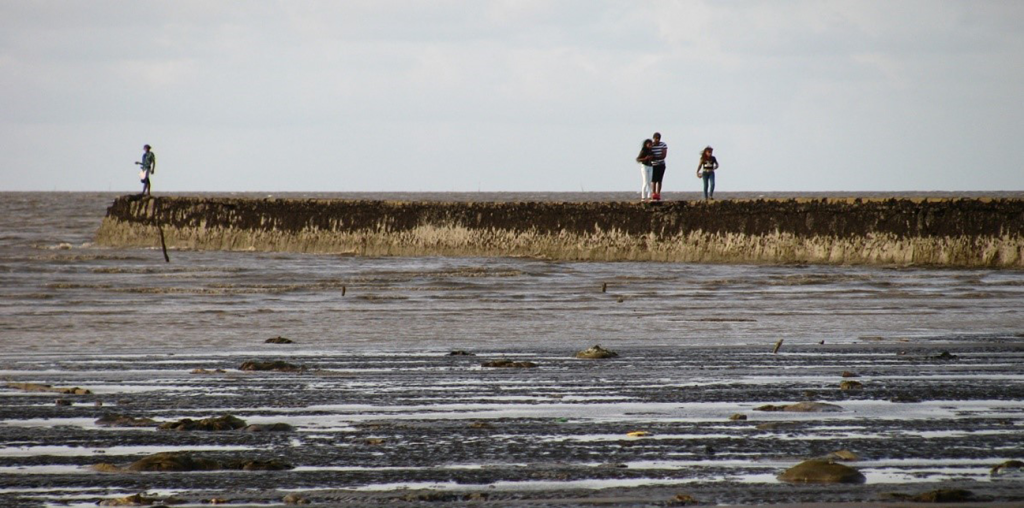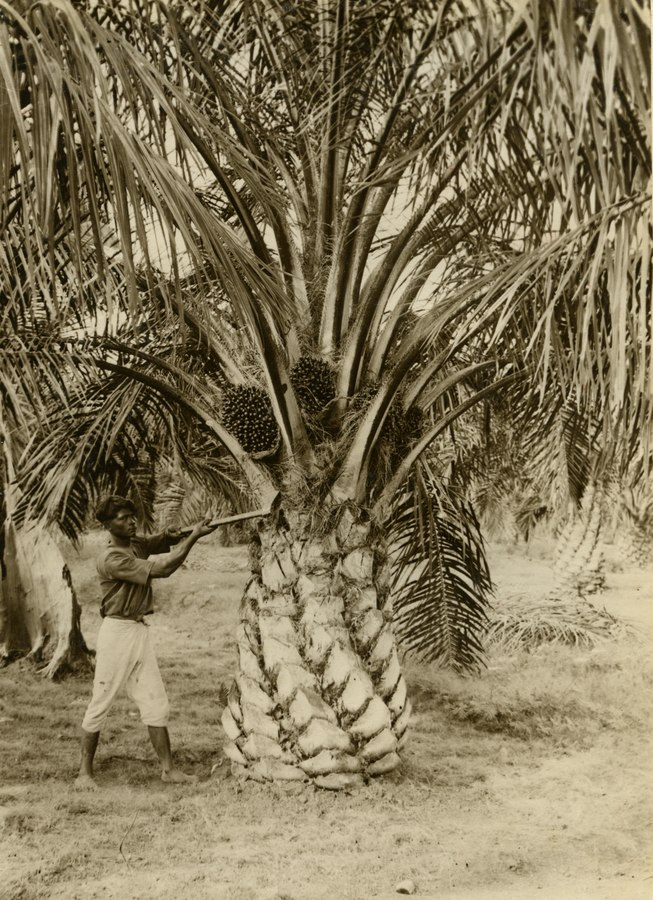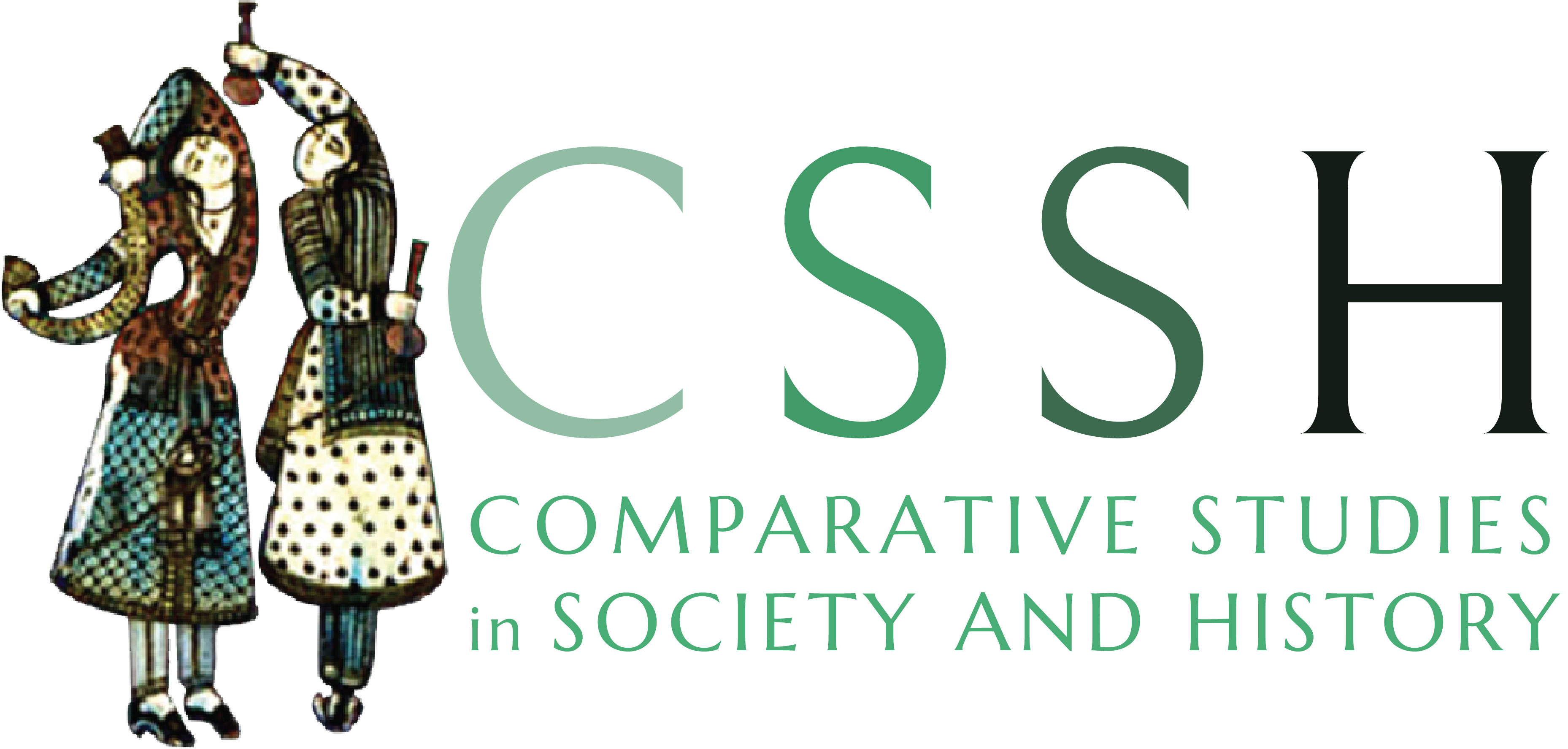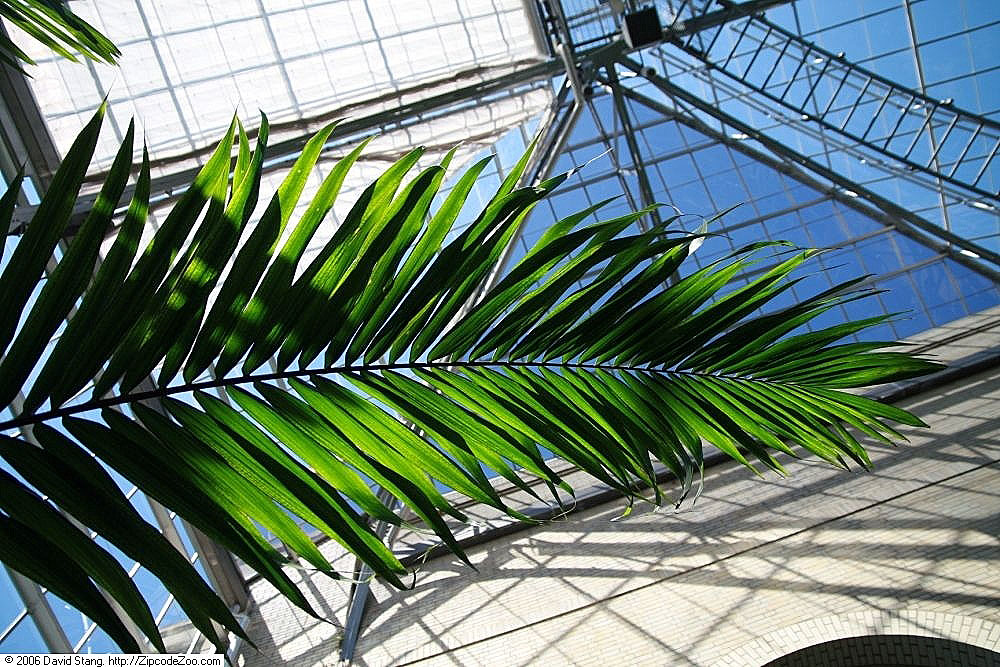
CSSH 64-4 begins with two articles that, as our editors put it, “guide us into new ethical-ecological geoscapes.” These are spaces filled with coastal mudflows, palm oils and seeds, applied science, big projects that flourished and failed, aftermaths, missing or copious documentation, and everywhere: experts.
SARAH E. VAUGHN
Erosion by Design: Rethinking Innovation, Sea Defense, and Credibility in Guyana
ALICE RUDGE
Cultivating “Care”: Colonial Botany and the Moral Lives of Oil Palm at the Twentieth Century’s Turn
What makes these geoscapes new? They are certainly a fascinating blend of human and non-human, animal and plant, living and inanimate forces. But the forces have deep histories, as do the ethical and ecological ideas Vaughn and Rudge explore. When read together, the papers focus our attention on a process, or an orientation – the editors call it ENGINEERING ECOLOGY – that calls for new kinds of comparative analysis. Is the novelty in the engineering? In the ecologies engineered? In the interpretive models required to make sense of it all?
We asked Vaughn and Rudge. Before responding, they read each other’s papers. To appreciate just how interesting their answers are, you should do the same!
CSSH: One of the joys of putting together an issue of CSSH is spotting analytical commonalities in papers whose subject matter is worlds apart. It’s often a jolting sensation, and it’s not easily reduced to formalism. What are the shared patterns you see in these papers, and where do they connect?
Sarah Vaughn: First, I’d like to say that it’s a pleasure to think with Alice Rudge’s work. It’s not often that such geographically distinct sites—Africa/Southeast Asia and Guyana—are brought into conversation. Our articles trace colonialism’s lasting footprint on environments. Alice details how British colonial botanical practices yoked the ‘improvement’ of oil palm cultivation to the governance of indigenous peoples in Africa and Southeast Asia. Oil palm is indebted to a global system of trade, profit, and most importantly care—a politically complex relation that draws on ideas of moral betterment as well as destruction. Alice offers us a perspective on the social life of a botanical species and its involvement in the making of human identities, industries, and labor. I examine the competing British and Dutch colonial legacies of sea defense development and their effects on engineers’ execution of climate adaptation projects in Guyana. In attempting to innovate the design of sea defenses, engineers confront the entangled realities of climate change, debt, empire, and institutionalized racism. They also come to appreciate the subtle capacity of coastal ecologies to re-shape engineering expertise over time. The articles provide useful entry points into discussions about how experts relate to the non-human and the importance of centering this story in the fields of environmental history and anthropology. Specifically, African Oil Palm (Elaseis guineensis) and groynes (sea defenses built to slow erosion) are the main sources of inspiration for the articles, which share a set of concerns about how the non-human comes to matter in contemporary technoscience and environmental management.
CSSH: What’s distinctive about the expert/object relationship? What did you see in it that changed the way you thought about its non-human components?

Vaughn: During my fieldwork, I encountered many engineers who treated groynes (along with other sea defense) as more than simply infrastructure. They treated them as a material record of Guyana’s past. This seemed significant to me because there were a limited number of archives that they could draw from that detailed the country’s original Dutch and British colonial grid of sea defense. Either Guyana’s ministries did not invest in a robust archive or documents simply went missing over the years. Engineers’ anxiety about archives were further compounded by their engagements with foreign consultants when identifying new project sites or completing data collection for them. Moreover, Guyana—like other developing states—has faced pressure from international donor institutions to address climate change. This pressure made evident to me that engineers’ concerns about archives were integral to who narrates the history of a place, and how.
CSSH: A powerful insight. Both of your papers acknowledge unseen things, left out things, suppressed things. It’s hard to do this, especially when you still have to track all the things that are seen, included, and privileged in a “conventional” historical account. You develop key analytical concepts that keep you moving between these registers. So much depends on how you deploy these concepts.
Vaughn: Yes. I use “afterlives of innovation,” a concept that helps me analyze the history of the Guyanese shoreline along with engineers’ conflicted investments in colonial models and technologies to design sea defenses. I see parallels in Alice’s work, in that palm oil is a material record for botanists and indigenous peoples impacted by its trade. Specifically, cultivation, seed transfer, and grafting tell her informants a great deal about the value of a place. Alice brilliantly shows us that the life chances of humans and plants are co-produced. We both suggest that the only way these entanglements become apparent is through a deep engagement with the gaps and silences in state and/or colonial science archives.
In this respect, groynes have inspired and challenged my own thinking. Before doing this research, I had never thought about sea defense as something other than a resource for nation-building or as ‘the stuff’ of politics. But being in conversation with engineers showed me that groynes do things to us (humans) as much as they do things to a shoreline. By this I mean that groynes have a life that unfolds outside the language, methods, and documents that are central to expert practices, including those of anthropology, engineering, and history. Taking groynes seriously as agents of history reveals the possible futures that could make living on this planet (more) hospitable for not just some, but all. This insight has raised a number of questions for me about what it actually means to identify something/-body as having the expertise to—in Alice’s word—“care.” Specifically, Alice’s article got me thinking about the ways that care/caring might require particular labor for making visible certain histories and not others.
CSSH: Exactly. It’s an orienting concept that makes new kinds of inclusive/exclusive analysis possible. And the caring is always shaped by the objects cared for, or cared about.
Vaughn: For instance, oil palm—a plant—is a different kind of historical agent than a hard (concrete) or soft (sand) groyne. After reading Alice’s paper, I wonder about the very material and concrete possibilities for caring about environments under long-term threat. How do the dynamics of caring shift? How are they embodied across species, sites, and archives?
Rudge: I’d like to thank you, Sarah, for your thought-provoking piece, which has implications far beyond its subject matter. And thanks to CSSH for this creative prompt! It’s been an unexpected pleasure to learn more about climate innovation and the materiality of colonial legacies through Sarah’s wonderful analysis of sea defenses in Guyana. A pleasure, as it has prompted me to think through the implications of her idea of “afterlives of innovation” in my own research, and an unexpected one, as botanical and infrastructural lives and agencies are quite rarely brought into the same frame, let alone across such vast geographical divides. Both of our articles trace differing ideologies of “improvement” across time and space. For the engineers with whom Sarah works, past ideologies of improvement appear in the afterlives of colonial sea defense infrastructures that now haunt coastal landscapes in Guyana. The colonial “frontier” engineering strategy of “holding the line” is now acknowledged by Guyanese engineers as being environmentally destructive, and yet it continues to shape the forms of engineering that are possible today. This is not only in terms of the physicality of what they can do to continually improve sea defenses, but also in terms of what kinds of narratives will gain engineers credibility (and funding) in an international landscape. This landscape is still shaped by colonial histories in which Dutch ‘experts’ are considered more “expert” than the Guyanese experts who engage in everyday acts of care, maintenance, and indeed innovation for and with these groynes, in what Sarah so beautifully describes as a “fluid performance.”
In contrast to this performance, in the case of the colonial engineers in Guyana, improvement was seen as less an ongoing commitment and process, and more a “discrete event” made material in the form of the “hard groynes.” Sarah’s evocative characterization of engineering as being either “hard” or “soft,” reflecting the varied materialities of the different substances used to build them, might thus have a broader application regarding types of “improvement,” or indeed science more broadly.
CSSH: That’s fascinating, both for general ideologies of progress and for the related intellectual and research agendas we call science. How might this play out?

Rudge: In the Guyanese case, Sarah tells us that engineers are moving away from “hard,” capital-intensive and extractive “holding the line” forms of sea defense towards “soft,” fluid and flexible forms of infrastructure that work with erosion rather than against it. Such a form of innovation is not a one off: it relies on the idea of constant change, constant motion, and as such, is always future-oriented. This kind of innovation might also provide a model for kinder forms of agriculture.
For example, geographer Case Watkins in his book Palm Oil Diaspora (2021) details how Afro-Brazilian oil palm growers on Brazil’s Dendê Coast work with the capacities of their palms to reproduce in a “semi-wild” or “subspontaneous” form, a stark contrast to the destructive large-scale monocrop plantation model. Examples such as this, in combination with the echoes of indigenous knowledges of the palm I have encountered in the archives and my first-hand experiences of the work of oil palm laborers in Malaysia, have meant that the shape-shifting, semi-wild oil palm has come to shape my own thinking. The palm, like the groynes, can have its own lives beyond being a tool of colonial and capitalist “improvement.” From here, we might be inspired to ask, could this provide the basis for a “softer” alternative to the monocrop plantation? While colonial scientists attempted to make oil palms into infrastructures, might alternative forms of “innovation” return to seeing botanical lives – like the “natures” that the engineers engage with – as collaborators, rather than adversaries to be brought under control? What new kinds of politics might emerge from this?
CSSH: And what innovations in our theory and method? These are the right questions, definitely.
Rudge: I wonder, too, are today’s super-engineered oil palms also, like the colonial sea defenses, “barnacles of innovations past”? These groynes haunt the Guyanese present. They are integral to the contemporary “nature” of erosion even though they compromise the integrity of the shoreline. So, too, are engineered oil palms now integral to the oil palm landscapes and economies of Southeast Asia. Without having been engineered, perhaps oil palms would not have been able to colonize the landscape so thoroughly. And yet, it is this “hard” over-engineering that also makes them vulnerable to pests and diseases, necessitating ever-increasing and ever-harder innovation, improvement, and engineering as a counter. This is not to say that engineers in Guyana are turning to a simplified, romanticized “nature,” or more “natural” processes in their attempts at innovative, “soft” engineering. What Sarah so beautifully describes is the engineers’ recognition that what they do is always already shaped by humans and human intervention. Their work of maintenance – perhaps care? – becomes linked to the idea of erosion as a more-than-human process of which humans are always a part, but of which they are never fully in control. Nor should they be. This might be an inspiration to those attempting to care for environments under long-term threat. In Sarah’s words, such a future might center “an appreciation of the scientific-political missteps of the past.”
CSSH: It’s a strange reality. Co-creation under conditions of partial control or no control, unfolding as a history of mistakes. This certainly changes the prevailing models of “improvement.”
Rudge: What both our articles show is that turning to the ways people “care” – whether care-as-maintenance or care writ large – has the potential to make certain more-than-human histories visible. Care emerges as a more-than-human act that has the power to shape human and non-human lives and agencies across time, in ways that can be generative or destructive. Attention to how acts of care and maintenance make (some) histories visible and material also demonstrates the importance of attending to gaps. When some histories are made visible, which are masked? While oil palm scientists worked hard to make their own stories visible through “careful” documentation and paper trails, this was often done with the aim of invisibilizing diverse indigenous knowledges of oil palms, whose histories make their presences felt only through the frustrations and omissions of the colonial archive.
CSSH: And those absences are felt because you care about the indigenous knowledge. Care/caring defines what matters, what is missing.
Rudge: It does. And, as Sarah so damningly shows, even when colonial engineering archives are patchy, their afterlives linger in how Guyanese engineering expertise is continually ignored in international circles. Having read Sarah’s article, and being inspired by the diverse views of the engineers she has worked with, I’m left wanting to ask more questions of the oil palm – and to find and explore more hopeful gaps, ones where “softer” forms of knowledge and care for plants might provide new ways forwards. How then might the idea of expertise itself be reshaped in environmental scientific thought?
CSSH: We trust you’ve put our readers in a similar mood. Inspired and ready to ask more questions. The afterlives of innovation, of care, of collaborations with human and non-human partners, of failed attempts to know and control – your work helps us redefine these problems. Thanks to both of you for sharing your thoughts, and for pointing us in new directions.
Alice Rudge is Leverhulme Early Career Research Fellow at University College London. She is a social anthropologist with research interests in language, environmental politics, and ethics. She conducts ethnographic research with Batek people in Malaysia, on which she has published in journals such as American Ethnologist and Journal of Linguistic Anthropology. Her current research addresses the moral lives of the African Oil Palm, both in Batek contexts in Malaysia, and in its broader historical and scientific milieus. Rudge’s first book, Sensing Others: Voicing Batek Ethical Life at the Edge of a Malaysian Rainforest, is forthcoming from University of Nebraska Press.
Sarah E. Vaughn is Assistant Professor of Anthropology at the University of California, Berkeley. She works at the intersection of environmental anthropology, critical social theory, and science and technology studies. Her research advances understandings of climate change in the Circum-Caribbean while tracking the affective, ethical, and political components of dignity and belonging. At stake in her research are questions about the role climate change has in shaping the materiality of expertise, an ethics of (re)distribution, and narrative form. Her book Engineering Vulnerability: In Pursuit of Climate Adaptation received the Duke University Press Scholars of Color First Book Award and the 2022 Julian Steward Award, presented by the American Anthropological Association’s Anthropology & Environment Society. Vaughn’s writing has appeared in Cultural Anthropology, Critique of Anthropology, Annual Review of Anthropology, Hau, Small Axe, and The Massachusetts Review.


